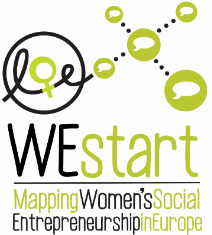
The Problem: Within the context of the Europe 2020 Strategy, entrepreneurship is seen as a means of boosting employment and in particular to reach the European employment target of 75% for women and men throughout the EU by 2020. However, little focus is given to social entrepreneurship as a means of binding the social fabric to build sustainable communities and a means of also reaching another European target which consists in lifting 20 million people out of poverty by 2020. Additionally, while many initiatives to foster women’s entrepreneurship have been developed at the European level, with the support of the European Commission, it is difficult to obtain an overall picture of women’s entrepreneurship in general and women’s social entrepreneurship in particular. The Project: The current project therefore proposes to bridge the gap in gathering evidence and knowledge with regards to women’s social entrepreneurship in Europe. This will subsequently support opportunities to further develop mutual learning, transnational partnerships, mentoring, transferring knowledge and skills, identifying good practices and providing new employment and business opportunities to women across Europe. The project consists of carrying out a mapping of what currently exists, where women’s social entrepreneurship is located and its breath in terms of 10 Member States of the EU. Activity: Mapping women’s social entrepreneurship Europe and disseminating results. Objectives:
- Identify and map women’s social entrepreneurship initiatives in Europe in 10 countries as a pilot which could subsequently be carried out in the remaining EU Member States and accession countries,
- Establish an overall picture of the activities carried out and how these respond to women’s empowerment in and sustainable growth of communities,
- Establish a data bank of female social entrepreneurs
- Give visibility to women’s social entrepreneurship within entrepreneurship development in Europe
- Provide links and facilitate networking between and among women’s entrepreneurship in Europe
- Identify key recommendations for policy makers to support women’s social entrepreneurship in Europe
- National Fact Sheets
- Eurpean Fact Sheets
- Final Report
- Communication Strategy
- Digital Learning Platform Consisting of Interactive Map, Database of Women Social Entrepreneurs, PDF versions of Fact Sheets and Report, and Networking Tools
Meet WEstart Project Manager Emily Usher Shrair

